Вы здесь
Imam al-Bukhari.
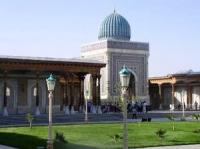
Kazakhstan section of the Silk Road.
“If you follow the ancient maps written on the stars, no person will ever understand you. So if you could read these maps, would you follow them? And forever be misunderstood? Or would you close your eyes tightly and pretend to be like everyone else?”
C. JoyBell C.
Tashkent & Central Asia on Great Silk Road.
In the history of human civilization there are individuals whose outstanding activities become part of the worldwide process of spiritual development. All the most valuable of previous experience is embodied in their works, and they determine the movement of scientific thought and the spiritual culture of society for many centuries to come.
For twelve centuries, the Islamic world with deep respect and trembling examines and studies Imam Al-Bukhari, considers his works the greatest achievements of theological thought. He is a native of the city of Bukhara, the most prominent of the entire Muslim world.
Hadiso knowledge emerged in the second half of the 8th century and developed in the following centuries, soon becoming one of the main sources of Shari'a (Muslim law) and historical science in the Muslim East.
Hadis - the plural "ahadis", literally "news", "news", "story". It is a science containing legends about the life and work of the Prophet Muhammad, his sayings, instructions and instructions, covering almost all aspects of the Muslim world.
They also provide information about relatives, friends and associates of the Prophet. The people involved in collecting and criticizing the Hadith were called Muhaddis. Al-Bukhari left an incomparable legacy to humanity. He was called "Imam of all Imams in the world", "Sultan of the faithful in the science of Hadith."
Imam al-Bukhari received worldwide recognition from his titanic work Al-Jami al-Sahih, a collection of authentic hadiths. In addition to this major work, Imam Al-Bukhari created 23 treatises and books. Most of them have survived to our days and have been repeatedly published in many countries of the world.
In addition, about a hundred comments and explanations in Arabic to Sahih Al-Bukhari were published. Speaking about the number of Hadiths included in the work of Sahih Al-Bukhari, Ibn Hajar al-Askalani, who edited this work, reports that the total number of Hadiths included in the main work of Imam Al-Bukhari, along with the repetitive ones, was 9087.
This number does not Hadith about the Companions and Followers of the Prophet Muhammad. ” The main work of Imam Al-Bukhari "As-Sahih" by his contemporaries was recognized as an outstanding guide to Fiqh and to the tenth century. took first place among the meetings of the Sunni tradition.
Khadith are considered to be the second sources of law after the Qur'an, the Sunna is based on them, they contain a significant part of the principles of the ideas of Islam. The imam Muslim, the second most important among the Muhaddis, thus addressed Al-Bukhari: “Oh, master of the masters, Sultan of the Muhadds, doctor of the Hadith! Let me kiss your tracks.”
These words show how great was the recognition and respect for him of the great contemporaries. Such an attitude towards Imam Al-Bukhari has survived to this day from the side of the Muhaddis and believers.
During the life of Imam Al-Bukhari, Bukhara was under the administration of the Tahirid vicar, who came to power in 821. The founder of the dynasty, Tahir b. Husayn His son Abdullah b. Tahir strengthened political and administrative power in Khorasan and Maverannahr, established agriculture, water use, and streamlined the tax system.
Head of the Tahir dynasty b. Husayn wrote to his son: “Remember that wealth does not bring profit when it multiplies and accumulates in the treasury, but, on the contrary, it grows, it is added when it is spent on the needs of its subjects, on paying their due and relieving them from their worries, the prosperity of the masses is achieved, it serves as an ornament for the rulers, this achieves the prosperity of the era, it gains fame and power.
However, thanks to this, you will have a greater opportunity to collect the land tax to be collected, the land tax collected by you will increase d and your wealth will increase, and thus you will gain strength in order to bind an army to yourself and satisfy the masses by pouring out your gifts on them ”.
Under the Takhirid in Bukhara, the rise of handicrafts and agriculture takes place. Science, culture are developing, rulers patronize poets and scientists. Imam Al-Bukhari, full name, Abu Abdullah Muhammad b. Ismail b. İbrahim b. Al-Mugira b. Bardazbeh b. Bazazbeh al-Jufi, known by the honorary nickname - "Imam al-Muhaddishin" (Imam leader of the Muhadis) and "Amir al-Muminin f-hadis" (Amir faithful after Hadith).
The genealogy of Imam Al-Bukhari, as can be seen from the names of his ancestors, does not go back to the Arabs. Imam al-Mughira's great-grandfather was a Zoroastrian, adopted Islam in the eighth century. with the assistance of the Arab governor of Bukhara Yaman al-Jufi. According to the customs of that time, the one who accepted Islam from someone, led his ancestry from him.
Written sources do not contain precise indications of the ethnicity of Imam Al-Bukhari. However, analyzing them, it is safe to believe that the distant ancestor of Imam Al-Bukhari was a representative of the local population of Bukhara, a Sogdian or a Turk who professed Zoroastrianism.
Al-Bukhari’s Iranian origin is excluded, since Iranians who came to Bukhara as part of the Arabs already professed Islam and bore Muslim names. Imam Al-Bukhari’s father, Ismail, also called Abul-Hasan, was at one time a great Muhaddish and engaged in commerce. Imam Al-Bukhari in his al-Tarih al-Kabir.
("The Big Story") gives full biographical information about his father. He was a devout man, strictly adhered to the rules of Sharia. Historian Akhiyd b. Hafas testifies that, before his death, Abu-l-Hassan told him this: “I have no doubts in one of my dirhams or in my property that I possess them in a dishonest or unclean way.”
Imam Al-Bukhari's mother was a devout and sensible woman who possessed miraculous power, purity and chastity. Abu Ali al-Hasani notes that Imam Al-Bukhari was blind when he was a child, as he had injured his eyes.
The pious mother saw in a dream the Prophet Ibrahim, who told her: "Thanks to your numerous prayers and appeals to Allah, he returned to your son a full vision." Awakened from sleep, she saw that her son’s eyes were full of light and he finally saw the light.
Imam Al-Bukhari was born on the 13th day of the month of Shawwal, after the Friday prayer in 194 Ghh. (July 20 - 21, 810) in the city of Bukhara. Imam Al-Bukhari’s birth date is due to the fact that his father personally recorded this event.
His mother was engaged in his upbringing only. At an early age, Imam Al-Bukhari showed interest in learning and memorizing Hadith. Imam Al-Bukhari Secretary - Abu Jafar Muhammad b. Abu Khatam al-Varrak wrote: “When I heard about how Al-Bukhari spoke about his desire to memorize hadiths while he was in elementary school, I asked him how old he was then, and he answered me that then he was 10 years old or less.”
One of his first teachers was the famous Bukhara scholar, a connoisseur of the science of Hadith ad-Dahili. Not 10 years old, while studying in elementary school, Al-Bukhari showed interest in learning Hadith. At the age of 11, Al-Bukhari began to correct his teacher in the classroom.
As he grew older, he not only memorized Hadiths by heart, but also classified them. Secretary Ibn Abu Khatam al-Varrak wrote from the words of Al-Bukhari: “When I was 16 years old, at the beginning I memorized the book of Ibn al-Mubarak and Wakiah and only after that I recognized people who had their own opinion.
Then, together with my elder brother Ahmad and my mother, I went to the hajj. ” Then the mother and brother Ahmad returned to Bukhara, and he stayed in the blessed Mecca, where he took lessons on the hadith of knowledge.
Bukhara scholar Salim b. The Mujahid reports: “Once I went to visit my friend Muhammad b. Salam al-Baykandi, who told me that if I had come early, I would have found a young man who knew by heart 70 thousand Hadith.”
At that moment I went back and, having overtaken that young man, asked: “Is it you who knows by heart 70 thousand hadiths?” - to which he replied to me: “Yes, I know more.” And then he continued: “I do not speak about the Hadith until I establish the exact date of birth and death of the Companions of the Prophet and their followers, as well as their habitat. In the same way, I tell about the Hadiths of the Companions of the Prophet and their followers, based on their correspondence with the Hadiths of the Quran and the Prophet Muhammad.”
In 827 he was 18 years old when he arrived in Medina and began to take lessons in hadithic studies from Ibrahim b. Al-Munzira, Abdulaziz b. Abdallah al-Uwaisi and others. Working on hadis, Imam al-Bukhari visited all known cities and countries of the Islamic world: Hijaz, Mecca, Medina, Ta'if, Jeddah, Basra, Kufa, Baghdad, Misr, Merv, Nishapur, Rei, etc.
The purpose of visiting these cities There was a study of Hadith and communication with many scientists. He constantly improved his knowledge. Al-Khatib al-Baghdadi, author of the “History of Baghdad”, notes that Imam Al-Bukhari allegedly said:
“I wrote down thousands, and possibly more Hadiths, relying on the statements of sheikhs and ulamas, in my book there is not a single hadith without Isnada (reliable chain of transmitters) ". Historians cite information about the teachers of Imam Al-Bukhari.
The scholar al-Isfahani (922 - 1005) dedicated a small special study to the imam al-Bukhari teachers. It contains in alphabetical order the full names of the narrators, the Hadith, exact data on the place and date of their birth, are indicated from the nickname, the date and place of their death.
This essay provides information about 306 story tellers from whom Al-Bukhari heard the Hadith. In fact, there were many more storytellers. Admiring the profound scientific knowledge of Imam Al-Bukhari, the famous Muhaddis of that time Muslim b. Al-Hajjaj told him: “Only those who envy can not recognize you. I am sure that there is no longer such a great scientist like you in the world.”
Contemporaries of Imam Al-Bukhari highly appreciated his scientific knowledge and ability to identify defects and flaws in hadiths. We give one example. Imam Al-Tirmidhi wrote: “I emphasized my thoughts and judgments about Hadith, narrators, their stories about defects in the Hadiths from the book Kitab al-Tarih, Imam Al-Bukhari’s book, and I learned a lot during joint scholarly discussions with Al- Bukhari.
He also wrote: “I have not met in the life of such a scientist as Ismail Al-Bukhari, who would so deeply and subtly understand the various flaws that exist in the Hadith, and know how to establish their original source.”
Throughout his life, Imam Al-Bukhari constantly assisted in science, and, if possible, in material terms, to those who needed it. He helped scholars, teachers, Muhaddis. Being engaged in trade, like his father, the Imam Al-Bukhari from his monthly income of five hundred dirhams necessarily distributed to the poor, needy, the needy.
He himself was content with little, trying to avoid unnecessary costs. Imam Al-Bukhari was an honest man, open-hearted, pious and pious, distant from gossip and gossip. He wrote: "From the moment I learned that gossip and gossip were dirty business, I didn’t say anything reprehensible to anyone."
In 869, Imam Al-Bukhari returned to his homeland and actively glorifies this city. The ruler of Bukhara from among the supporters of Tahirid, for personal reasons, begins to turn the inhabitants of Maverrennhr against Al-Bukhari, accusing him of heresy.
He became a victim of envious and detractors. Famous orientalist Sh.S. dedicated his article specifically to this topic. Kamoliddin, in which he summarizes: "Although Imam Al-Bukhari had great services to science and society, he became a victim of fanaticism, conservatism, fundamentalism, deftly used for personal purposes by his high-profile detractors."
Learning about the intrigues of the rulers against him, not wanting to oppose believers, his supporters and opponents, Al-Bukhari said the following prayer: "O Allah, even though the world is great, but he became cramped for me, and I ask him to accept me."
Soon he became seriously ill and in 256 gh. On the evening of the holiday of Ramadan (id al-Fitr), on August 30 – 31 870, he died in the village of Hartang (Chelak district) 25 km north of the city of Samarkand. The time for the restoration of historical justice in relation to the glorious heritage of Imam Al-Bukhari came with the achievement of independence and justice by Uzbekistan.
In 1993, a conference was held in Bukhara on the theme “Imam Al-Bukhari and Modernity”.
On April 29, 1997, the Government of the Republic of Uzbekistan issued a decree “On the celebration of the 1225th anniversary of the birth of Imam Al-Bukhari according to the Hijr - lunar calendar”. In November of the same year, the General Conference of UNESCO adopts a resolution on participation in 1998 in the celebration of the memorial of the 1225th anniversary of the birth of the scientist Ismail al-Bukhari.
As part of the preparation and celebration of the anniversary, a collection of Al-Sahih was published in Uzbek, Russian, English, and Arabic. Many articles, essays in newspapers and magazines, thematic programs on radio and television were devoted to the life and activities of Imam Al-Bukhari.
In Hartang, a magnificent memorial complex was built at the tomb of Imam Al-Bukhari, made in the traditions of the ancient architecture of Central Asia. The scientists of Uzbekistan prepared and published the fundamental work “Imam Al-Bukhari. Light from time immemorial."
Speaking at the opening ceremony of the imam Al-Bukhari memorial complex, President of Uzbekistan Islam Abduganievich Karimov said: “Hazrat Al-Bukhari is the pride of not only the Uzbek people, but also of the entire Muslim world.
The life of this holy person in the literal sense is an example of scientific and human heroism, unbending will, a symbol of unquenchable conviction. " The Bukharians contributed to the perpetuation of the memory of Imam Al-Bukhari.
Until today, it has not been established in which quarter, on which street, in which house Imam Al-Bukhari was born in the city of Bukhara. Therefore, in 1997, the decision of the Bukhara city hokimiyat was made to perpetuate the memory of the famous countryman.
A memorial was built with a museum exposition and a separate hall where a capsule with the ground was brought from the tomb of Imam Al-Bukhari. In connection with the above, an open competition was announced among architects.
According to the results of the competition, the city commission recommended for the construction of the memorial building a project developed by famous architects from Bukhara, Zoirsho Klychev and Zebo Sharipova.
In 1998, the memorial building was commissioned. It was built by the method of khashar with donations from residents and organizations of Bukhara. Today this place is one of the favorite places of rest and reflections on the eternity of the inhabitants and guests of Bukhara. Let us dwell on the architecture of the memorial building.
The memorial is located according to the principle of the traditional organization of the architectural space - opposite the ancient mazar of the Chashma-Ayub mausoleum, where, according to historical data, there is a burial site of the teacher Imam.
Allegorical forms of the exposition of the memorial are ideologically and planningly interconnected with the function of the building - memory, as a place of visiting and receiving historical information from museum exhibits.
The asceticism of the outer forms and the lunar motifs of the inner space express a certain mood of perception of the creativity of the Hadith collector Imam Al-Bukhari. The authors of the project, abandoning the stereotypes that occurred in the design of similar memorials, in order to emphasize the genius of Imam Al-Bukhari, made an innovative decision.
The space-planning composition consists in the plan of the elements of the heraldry of Islam: a crescent, an eight-pointed star and a symbolic book. Together, the signs form an almond-shaped, oriented to Mecca and are located on one east-west axis with the Chashma-Ayub mausoleum.
The genius of the great Imam, personified in the famous work of the massive Hadith book “Al-Jami As-Sahih” through a metaphor, is arranged in such a way that it organizes an inner courtyard, to which the visitor climbs the ramp, as if on a moonlit path. In the courtyard, in the epicenter of the star, a glass dome-lantern.
The “book” on the side of the courtyard forms a kind of mihrab niche and consists of a multitude of symbolic hadith books, reflecting at the same time architectural motifs of the masonry and panjars of the mausoleums of Ismail Samani and Chashma-Ayub.
Then the movement goes inside the "Moon", where the exhibits are located. The outer wall of the museum part is deaf; the interior - from floor to ceiling - is glass, which visually ensures the integrity of the courtyard space along with the dome-lantern and the "Book".
Folds of the crescent through open stairs lead down to the shrine of the basement. In the glass sarcophagus lantern in the center of the hall in a tank framed by azure marble, is the land brought from the Imam burial place, from the village of Hartang near Samarkand.
There is a mihrab niche. The star-shaped relief decor of the hall, together with the narrow crevices of the outer wall of the artificial light from the top of the columns of natural anti-aircraft lighting from the mihrab wall, reinforce the impressions of sacredness.
On the outer perimeter, the crescent is decorated with a relief calligraphic frieze from the Imam's quotations. On the west side of the "Book" is a cascade of water-impulses of Purity and Reliability. And on the end of the "Book" outside - the inscription of the name of Imam.
The bridge, which is located at the entrance to the museum, is considered to be a bridge of honesty and cleanliness. Pools on both sides of the bridge are filled with water. A person who has passed through this bridge upwards is considered to be cleared of all sins.
The center of the composition in the form of an open book depicts 40 open books. It is the symbol of the fruits of Imam Al-Bukhari's 40-year-old labor - a collection of authentic hadith "Al-Jami Al-Sahih". Independent Uzbekistan, building the future, is based on the country's historical and cultural heritage, moral and spiritual sources - the unique experience of our great ancestors. I
mam Al-Bukhari is one of our famous countrymen who praised and glorified our homeland.
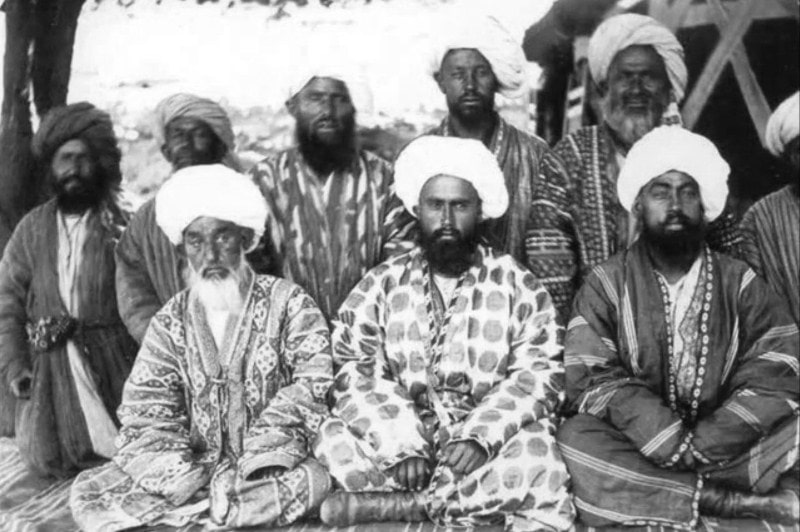
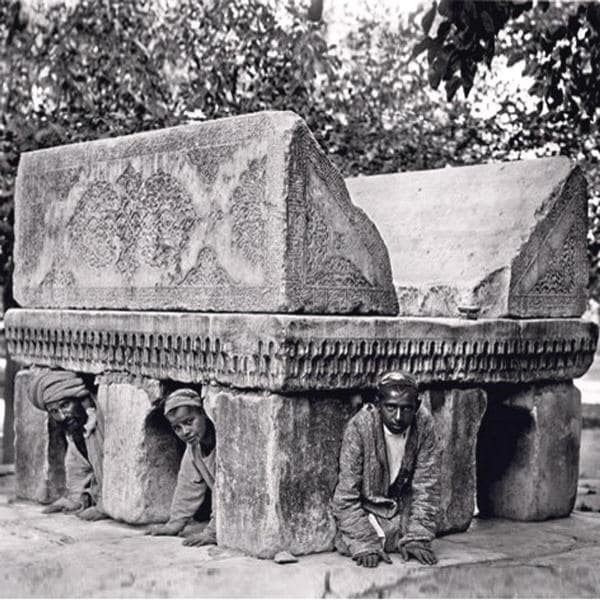
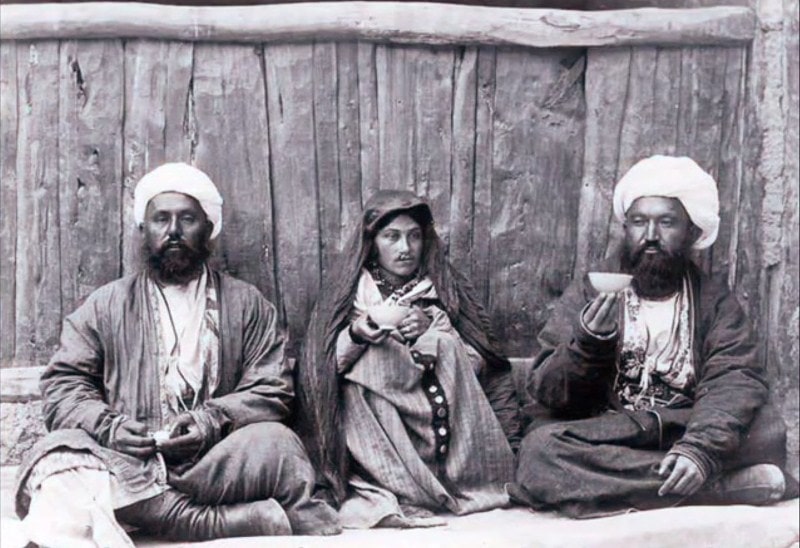
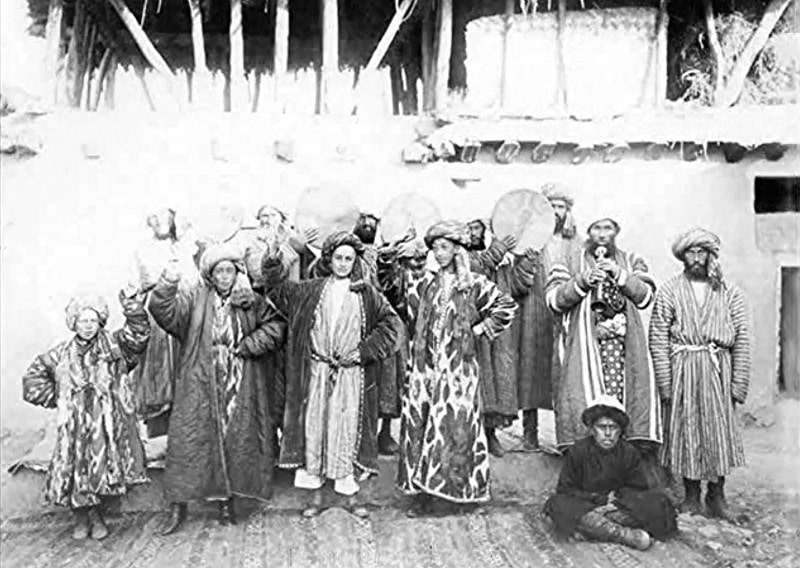
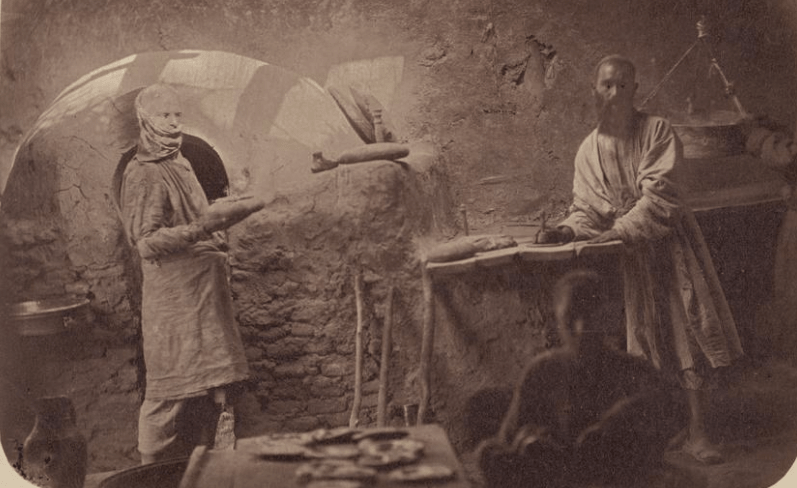
Enlightener:
Robert Almeev, Ph.D.
Photos
Alexander Peetrov.







